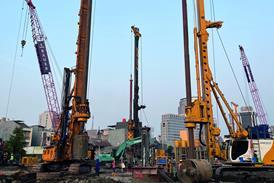Public Accounts Committee accuses ministers of spending 鈥渨ell over the odds鈥� on new free schools, but leaving others in poor condition
Watchdog MPs have accused the government of wasting money on attempting to meet demand for school places with expensive free schools in places where capacity is not needed, and of neglecting the maintenance of existing schools.
A Public Accounts Committee report said the Department for Education did not know enough about the state of existing school buildings to plan effectively for their upkeep, and was also in the dark about the 鈥渜uality and suitability鈥� of new school buildings commissioned since 2010.
It also suggested that developers were not being asked for enough money to fund new school places as part of Section 106 planning gain agreements connected with housing schemes.
The wide-ranging report said the government鈥檚 schools capital policies were 鈥渋ncreasingly incoherent鈥� and in particular saw it spending 鈥渨ell over the odds鈥� on creating 500 more free schools while other schools are in poor condition.
MPs said the cost of secondary school places at free schools was 51% higher than those in local-authority schools, primarily because of site acquisitions where DfE 鈥渃ommonly pays well in excess of official valuations鈥�.
They said the average cost of a free school site was 拢4.9m, and that the DfE expected to spend 拢2.5bn on acquiring land for new school facilities over the next five years.
鈥淲e are concerned that there is a tension between setting up new free schools and supporting existing schools,鈥� the committee said.
鈥淔ree schools are helping to meet the need for new school places in some areas but are also creating spare capacity elsewhere.
鈥淪ome localities have spare capacity of over 20%, which has financial implications 鈥� schools with unfilled places have less income than if they were full because funding is linked to the number of pupils.鈥�
The report said DfE expected to spend an average of 拢2bn a year on maintaining and improving the school estate in the years to 2021, but faced 鈥渟ignificant challenges鈥� as school buildings continued to deteriorate and some 420,000 new places were required.
鈥淚n the context of severe financial constraints it is vital that the department uses its funding in a more coherent and cost-effective way,鈥� it said.
The report recommended DfE set out how it would work more closely with local authorities to ensure that demand for new school places met, and 鈥渜uantify and publish鈥� the extent to which free school proposals met local needs for new school places.
It added that the department should also set out how the costs and benefits of free school proposals were weighted up.
Other recommendations included improving the routine reporting of school-building conditions, improving its knowledge of the prevalence of asbestos in the school estate, and joint working with the Department for Communities and Local Government 鈥渢o crack down on loopholes鈥� surrounding schools funding in Section 106 agreements.
Committee members also asked the DfE to report back to them by the end of the year on the quality and suitability of new school buildings provided under the Priority School 黑洞社区 Programme and Free Schools Programme, including the temporary accommodation that is being used for some free schools.
They also called on the department to review its criteria for new schools and asked it to consider setting tougher standards so that new facilities 鈥渟tood the test of time鈥�.
Jane Duncan president of the Royal Institute of British Architects, said the PAC report underscored many of the profession鈥檚 concerns about UK schools.
鈥淲e particularly welcome the call for improving information collected on the condition of the school estate and the need for well-maintained buildings, which were both recommendations of the RIBA鈥檚 own Better Spaces for Learning report,鈥� she said.
鈥淓nsuring the long-term viability of school buildings, through standardised post-occupancy evaluation, is key to delivering schools that are fit for our children in the future.
鈥淲e urge whoever forms the next government to ensure high-quality school buildings can be delivered, to the benefit of pupils, teachers, school leaders and the local community.鈥�























No comments yet